Venice: A Journey Through Timeless Architecture
Dive into the architectural wonders of Venice on this captivating free walking tour, where every corner reveals a piece of history and art.
Time
3 Hours
Stops
9 Places
Distance
2.2 km
Piazza San Marco (St. Mark's Square)
Start your tour in the iconic heart of Venice, where architectural marvels like St. Mark's Basilica and the Campanile tower over the bustling square.
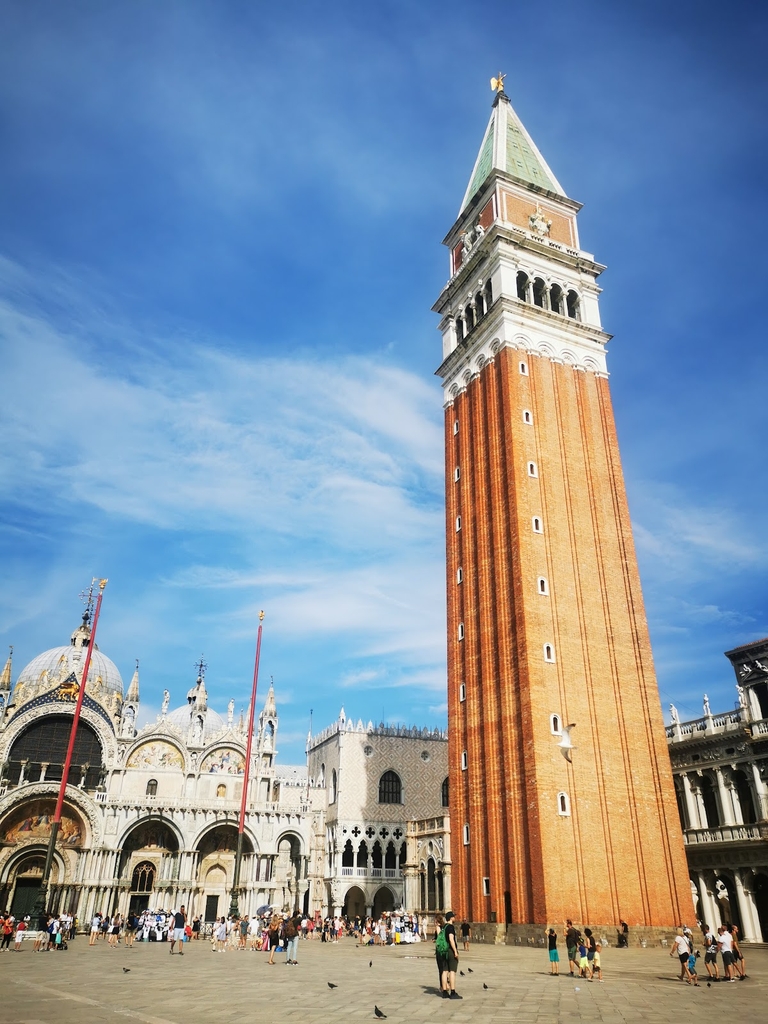
Piazza San Marco (St. Mark's Square) (Source: Google Maps)
Doge's Palace
Just a short walk away, visit the Doge's Palace, a masterpiece of Gothic architecture that was once the residence of the Doge of Venice.
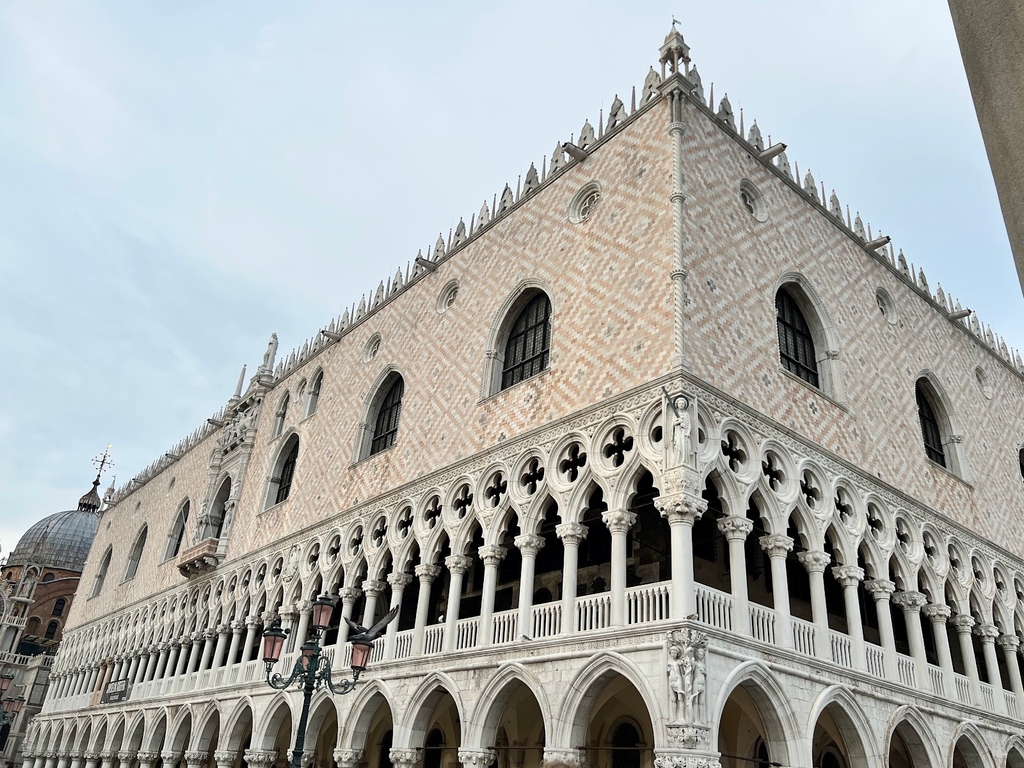
Doge's Palace (Source: Google Maps)
The Doge's Palace, or Palazzo Ducale, is a stunning example of Gothic architecture, showcasing the grandeur and power of the Venetian Republic. Once the residence of the Doge, the highest authority in Venice, this palace is adorned with elaborate sculptures and intricate details. The palace's façade features a remarkable pink and white color scheme, with delicate arches and ornate columns. Inside, visitors can explore the opulent rooms, including the Grand Council Chamber, which houses Tintoretto's monumental paintings. The palace also connects to the Bridge of Sighs, historically used by prisoners to cross to their cells, adding a poignant layer to its rich history. The Doge's Palace remains a symbol of Venice's artistic heritage and political history.
Bridge of Sighs
Cross the famous Bridge of Sighs, a picturesque enclosed bridge that connects the Doge's Palace to the historic prisons.
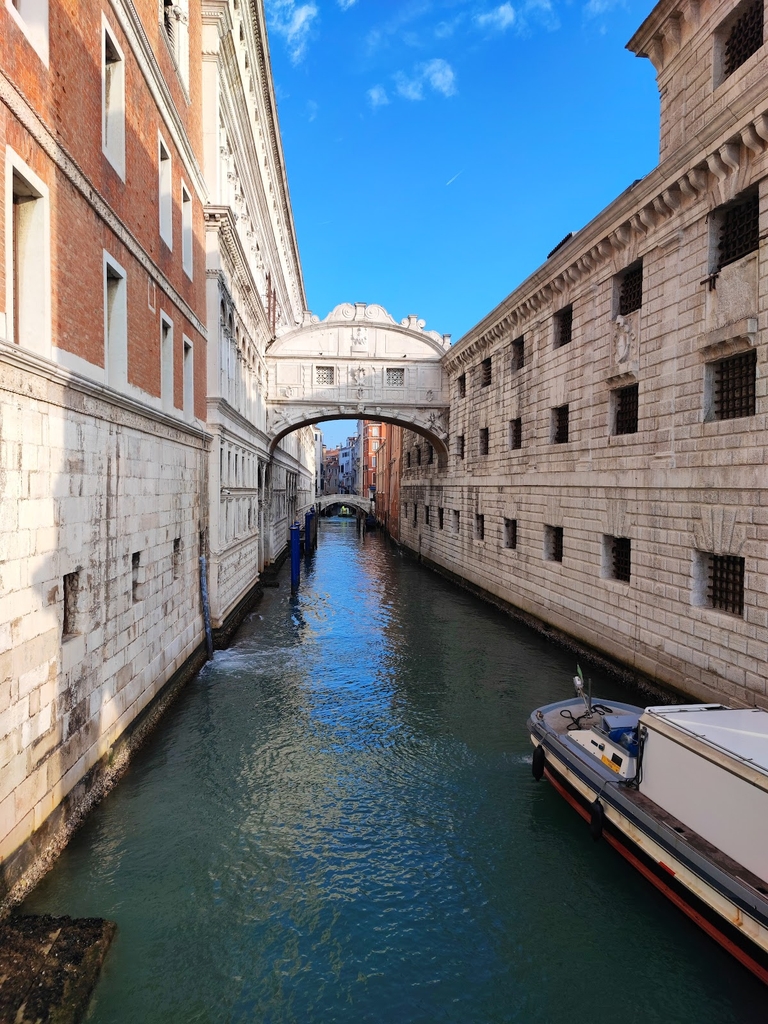
Bridge of Sighs (Source: Google Maps)
The Bridge of Sighs, or Ponte dei Sospiri, is an iconic enclosed bridge that connects the Doge's Palace to the historic prisons of Venice. Constructed in the early 17th century, this bridge is named for the sighs of prisoners who would gaze out at the beautiful Venetian landscape one last time before their imprisonment. The bridge features elegant Baroque architecture, with its white limestone façade and ornate details. Its unique design, consisting of two parallel corridors, is a marvel of engineering. The Bridge of Sighs has become a symbol of romanticism and melancholy, often depicted in art and literature. Today, it serves as a poignant reminder of Venice's complex history, drawing visitors who wish to capture its haunting beauty.
St. Mark's Basilica
Explore the breathtaking Byzantine architecture of St. Mark's Basilica, known for its opulent design, golden mosaics, and historical significance.
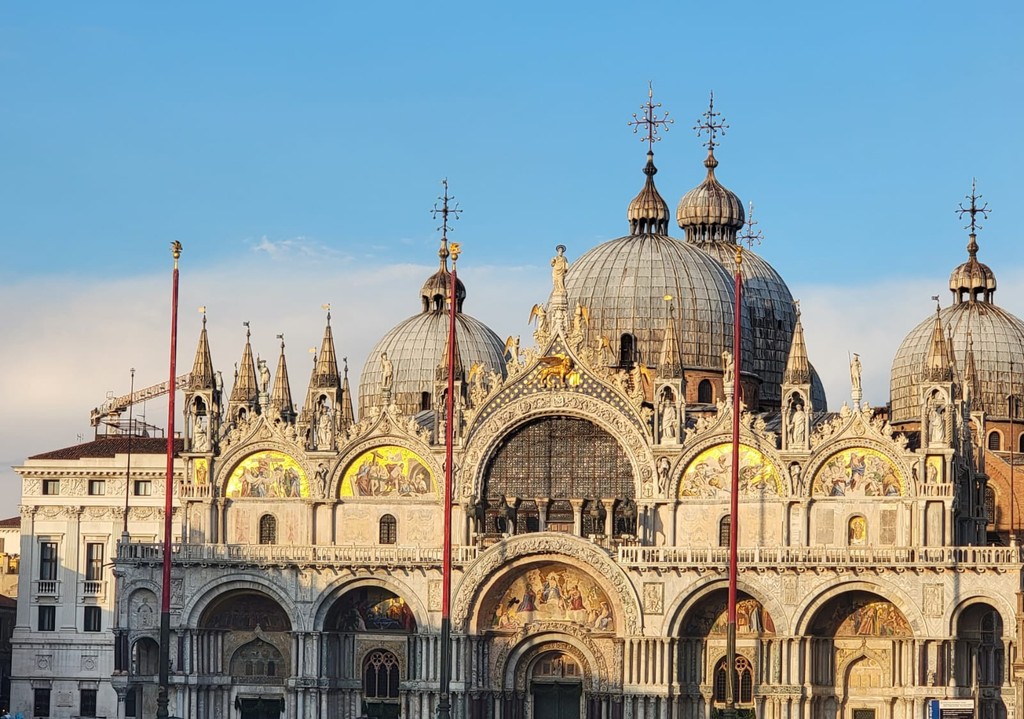
St. Mark's Basilica (Source: Google Maps)
St. Mark's Basilica, known as Basilica di San Marco, is a masterpiece of Byzantine architecture located in the heart of Venice. Famous for its opulent design and stunning golden mosaics, the basilica is a testament to the city's rich religious and artistic heritage. Its façade is adorned with intricate carvings and domes, creating a breathtaking sight that attracts millions of visitors each year. Inside, the basilica boasts over 8,000 square meters of mosaics, depicting biblical scenes and saints, all glittering with gold leaf. The Pala d'Oro, a stunning altarpiece, showcases exquisite craftsmanship and adds to the basilica's splendor. Historically, St. Mark's Basilica has served as the city’s cathedral and the burial site of St. Mark, the patron saint of Venice, making it a significant pilgrimage site.
Rialto Bridge
Head to the Rialto Bridge, the oldest of the four bridges spanning the Grand Canal, offering stunning views and a glimpse of Venice's bustling market life.
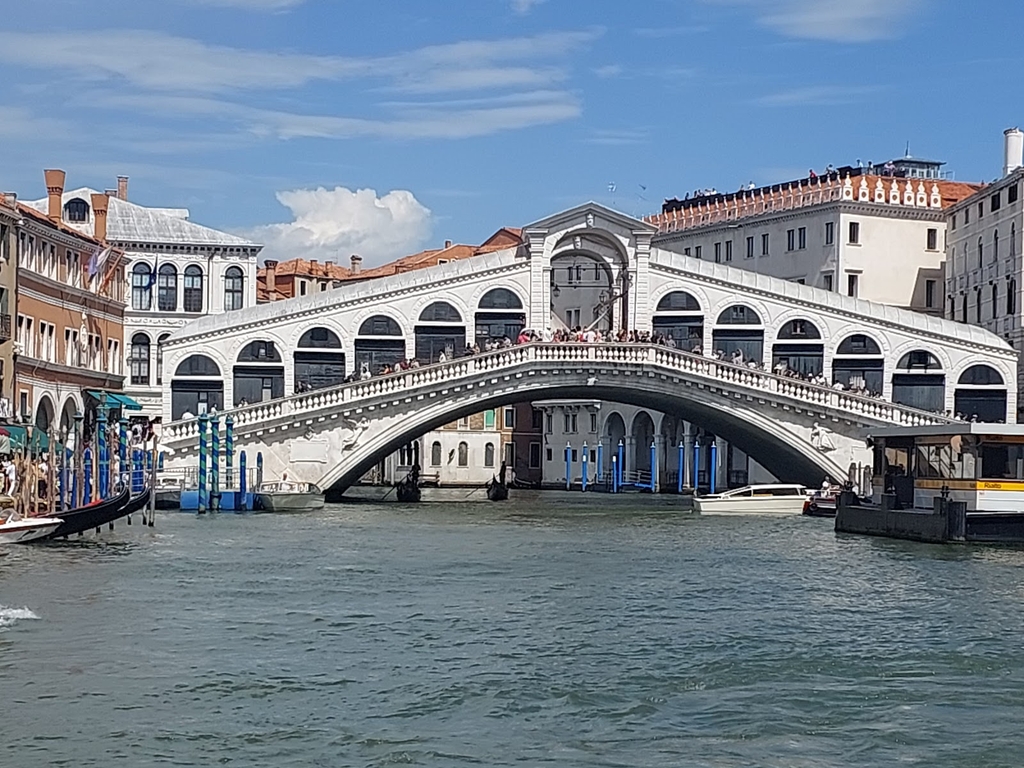
Rialto Bridge (Source: Google Maps)
The Rialto Bridge, or Ponte di Rialto, is the oldest and most famous bridge spanning the Grand Canal in Venice. Completed in the late 16th century, this architectural marvel exemplifies Renaissance design, featuring a stone arch and a wooden walkway lined with shops. The bridge not only serves as a vital crossing point but also offers stunning views of the bustling canal below, where gondolas and vaporetti navigate the waters. Historically, the Rialto area was the commercial heart of Venice, and the bridge played a crucial role in trade and commerce. Today, it remains a symbol of Venetian culture, attracting both tourists and locals who come to admire its beauty and the vibrant market life that surrounds it.
Campo Santa Maria Formosa
Discover a charming square surrounded by beautiful Renaissance buildings, including the Church of Santa Maria Formosa.
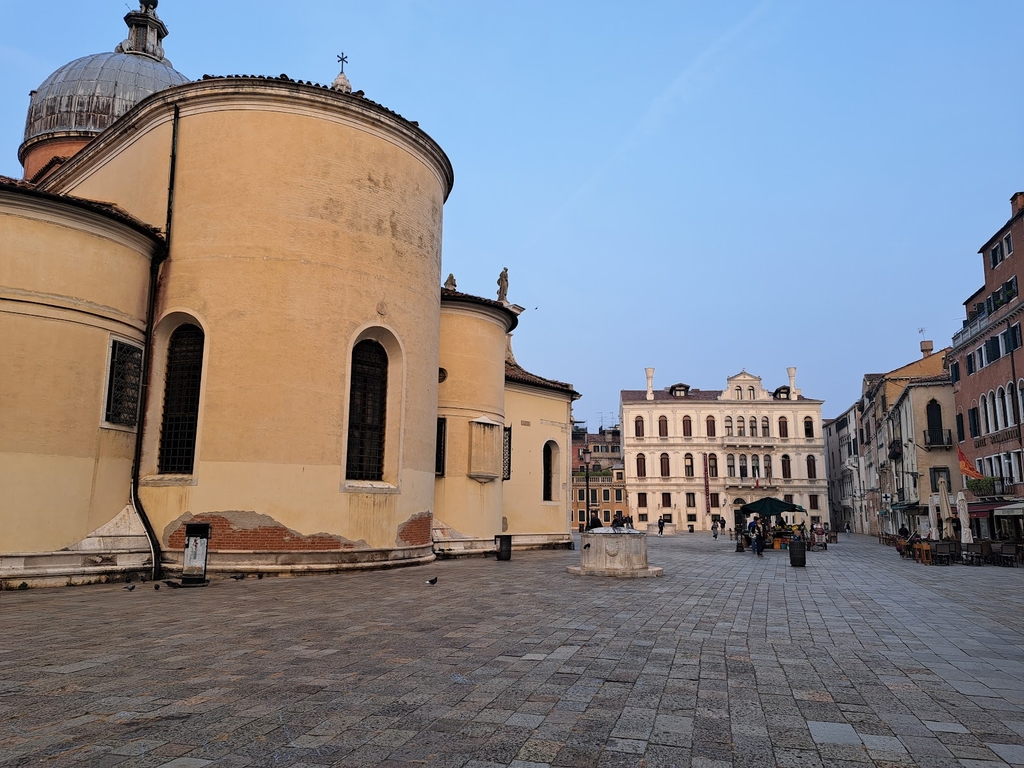
Campo Santa Maria Formosa (Source: Google Maps)
Campo Santa Maria Formosa is a charming square in Venice, renowned for its picturesque surroundings and historical significance. The square is bordered by beautiful Renaissance buildings, including the Church of Santa Maria Formosa, which dates back to the 15th century. The church is celebrated for its stunning architecture and artwork, including works by renowned artists like Giovanni Bellini. The square itself has been a gathering place for locals and visitors alike, often hosting cultural events and festivals. Its vibrant atmosphere is enhanced by cafes and shops that line the square, making it a perfect spot to relax and soak in the Venetian ambiance. Campo Santa Maria Formosa exemplifies the rich cultural tapestry of Venice, where history and modern life intertwine.
Basilica dei Santi Giovanni e Paolo
Visit this impressive Gothic church, one of the largest in Venice, known for its grand architecture and historic tombs.
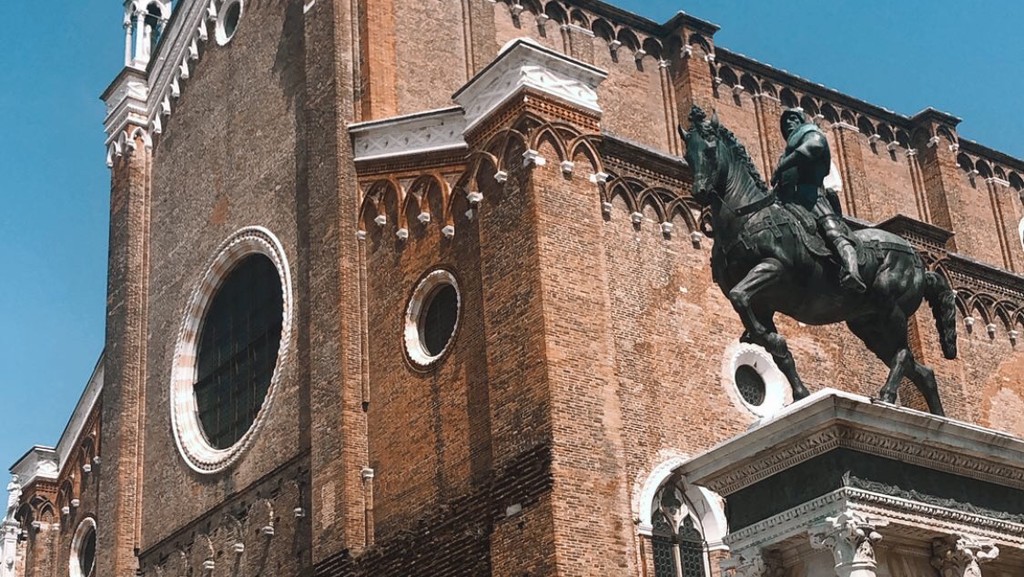
Basilica dei Santi Giovanni e Paolo (Source: Google Maps)
The Basilica dei Santi Giovanni e Paolo is one of the largest and most significant Gothic churches in Venice. Built in the 13th century, this impressive structure is known for its grand architecture and historical tombs of notable Venetian figures. The basilica features a stunning façade adorned with intricate sculptures and a striking rose window. Inside, visitors can marvel at the vast interior, which houses numerous chapels and significant artworks, including works by famous artists such as Veronese and Bellini. The basilica also serves as a mausoleum for the Doges of Venice, adding to its cultural and historical importance. Its serene atmosphere and architectural beauty make it a must-visit for those exploring the spiritual heritage of Venice.
Scuola Grande di San Marco
Admire the stunning facade of this Renaissance building, which now serves as a hospital, but originally was a confraternity.
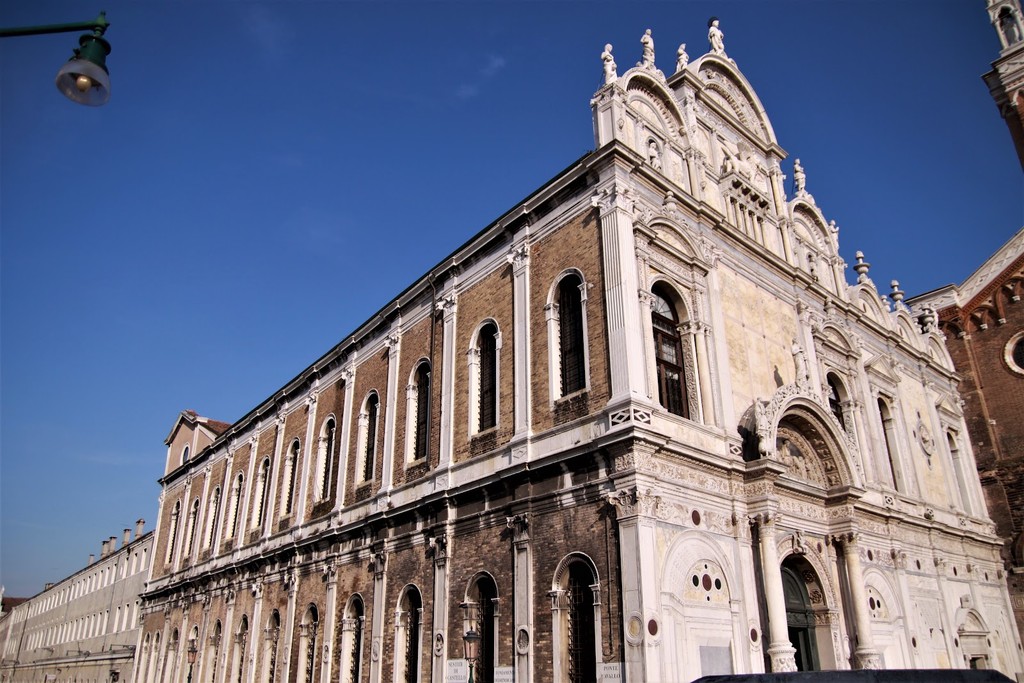
Scuola Grande di San Marco (Source: Google Maps)
The Scuola Grande di San Marco is a remarkable Renaissance building in Venice, originally established as a confraternity dedicated to St. Mark. Its stunning façade, characterized by intricate sculptures and elegant columns, is a prime example of Venetian architecture. The building now serves as a hospital, but its historical significance remains. Inside, visitors can admire the beautiful interior, which features works of art by prominent artists of the Venetian Renaissance. The Scuola played a vital role in the social and cultural life of Venice, hosting various events and gatherings over the centuries. Its architectural beauty and historical importance make it a significant landmark in the city, reflecting the rich artistic heritage of Venice.
Fondamenta Nove
End your tour at Fondamenta Nove, a waterfront promenade offering breathtaking views of the Venetian lagoon and the islands of Murano and San Michele.
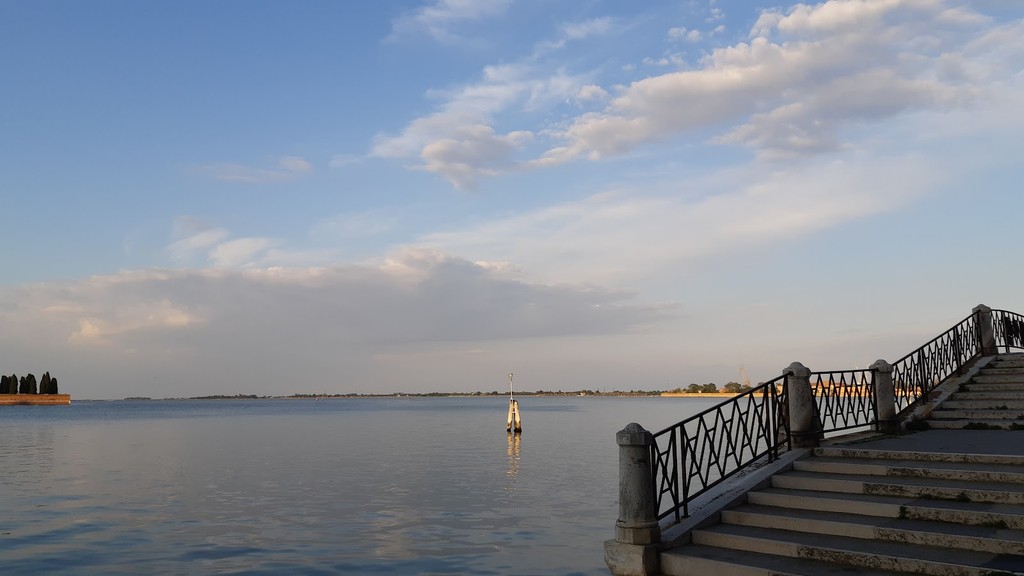
Fondamenta Nove (Source: Google Maps)
Fondamenta Nove is a picturesque waterfront promenade in Venice, offering breathtaking views of the Venetian lagoon and the surrounding islands, including Murano and San Michele. This charming area is less crowded than other parts of the city, providing a tranquil setting for visitors to enjoy the beauty of Venice. The promenade is lined with quaint cafes and shops, making it an ideal spot to relax and savor the local cuisine. Historically, Fondamenta Nove has been a vital transportation hub, connecting the mainland to the islands. Its scenic vistas and serene atmosphere make it a perfect conclusion to a journey through Venice, allowing visitors to reflect on the architectural wonders and cultural richness encountered throughout the tour.

Your travels, your rules.
Create your own Free Walking Tours.
Set your preferences, distances and anything you want to do or see.
Completely free, no payment required.